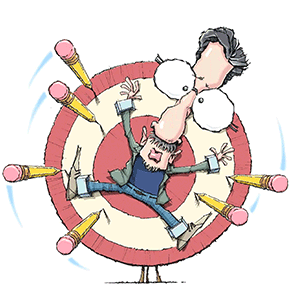The Kid Whisperer: How to get great classroom behavior without using a behavior system
Published in Lifestyles
Dear Kid Whisperer,
I attended your Behavioral Leadership training two years ago and have found many great successes with your strategies in my classroom.
I used to use a system for tracking kind acts in the classroom and using class-wide rewards, and I’m thinking about returning to a similar one that I saw on Facebook. The goal is to keep the community unified but accountable and to visually see their progress.
Answer: I am so happy to hear that you have found success using Behavioral Leadership strategies and procedures!
You certainly can go back to using a class-wide system for positive behaviors. While this is better than a class-wide system for negative behaviors (check marks, pulling cards, “clipping down”) I don’t suggest it. You say the systems that you are looking at using “keep the community unified and accountable” but I think Behavioral Leadership already does exactly that already.
There are two main reasons that I wouldn’t go back to a system. First, it takes your time and energy. I suspect that you are like every other teacher I’ve ever met, and every moment of your day is full. So then, you will have to take something away that you currently do. I would hate for this to take away from something else that is good for your kids.
Second, having these types of systems tends to, especially with the most savvy of kids, give them the impression that you need some kind of tangible bribes to “make them behave.” Having no system has the opposite effect. We want kids to think, “Why do I do good things in class? I don’t really know…my teacher doesn’t really do anything to make me be good. Hmm… it must be because I am good.”
Of course, you have been using Behavioral Leadership strategies and procedures to guide kids to make good choices, but, as you know, these just tend to become so engrained in the classroom that kids don’t really notice much, since they’re not punitive and most are just nice but sophisticated means of sharing control and building relationships. It’s kind of like fish not really knowing that they live in water. They just take it for granted. It’s just better for kids to think, “I use positive behaviors because I’m a good person” rather than for any part of them to think, “I use good behaviors to get things.”
I often had kids in my classes who were used to a system from previous years. Here’s a sample conversation that I can remember having on the first day of school about that. You may have already had a similar conversation in the last two years.
Kid: So, what do you get in here if you’re good?
Kid Whisperer: What do you mean?
Kid: I mean, what do I get if I’m good?
Kid Whisperer: Well, I think that you are good no matter what. Now, people can choose to do good things and bad things. That’s up to you. In this room, if you choose to work hard, you get to do things that are maybe more fun than work. If you do things that are kind, helpful and thoughtful, more people will like you. In this room, if you are the first to be ready, you get to do fun stuff before the people who are not ready. If you are efficient, you will have more time to play. If you are responsible, you will get more leadership opportunities.
And, as you know, the use of Behavioral Leadership strategies and procedures creates the environment that I describe here, and Traditional Discipline does not.
©2024 Tribune Content Agency, LLC.
























Comments